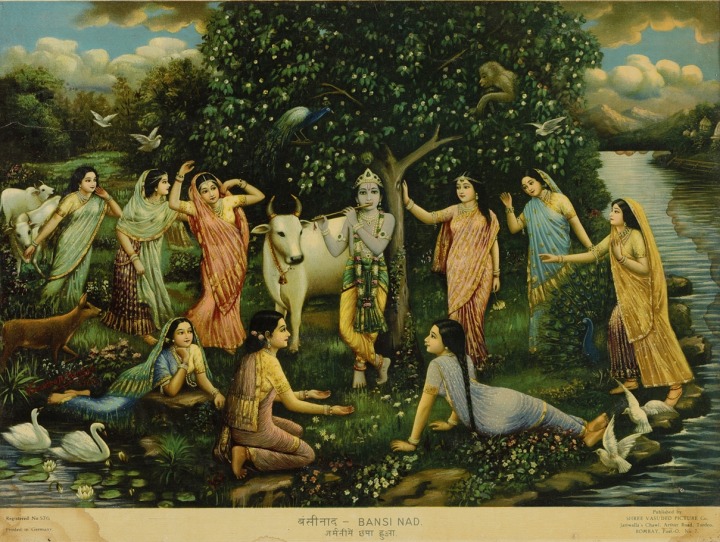Varma Prints
The Indianness Reproduced in Modern Technique
Raja Ravi Varma (1848–1906) was a pioneer of Indian modern art producing work in oils on Hindu subjects and Indian mythology, incorporating Western techniques in perspective and light. Highly admired in the modern art world and art schools built up in India under colonial rule, he became well-known at royal courts throughout the land. In 1892 the Raja Ravi Varma Press was set up in Bombay (present-day Mumbai) and mass-produced his oil paintings in oleographs, a method stemming from lithography. While many works are undoubtedly from Varma originals, other artists’ work was also printed at this press and thus rather generically referred to as ‘Varma prints.’ Varma’s prints achieved great popularity in every region and across a broad range of Indian society. In particular, the figures of gods and goddesses painted facing out to the viewer can be seen not simply in terms of art appreciation but as religious paintings in which deities and believer have opportunity to engage with each other at close range, which resulted in decorating their print with clothes and metal objects.

Raja Ravi Varma "Hamsa and Damayanti" first half of 20th century oleograph on paper

Vasudeo H. Pandya "Krishna and Gopies (Bansi Nad)" early 20th century oleograph on paper
